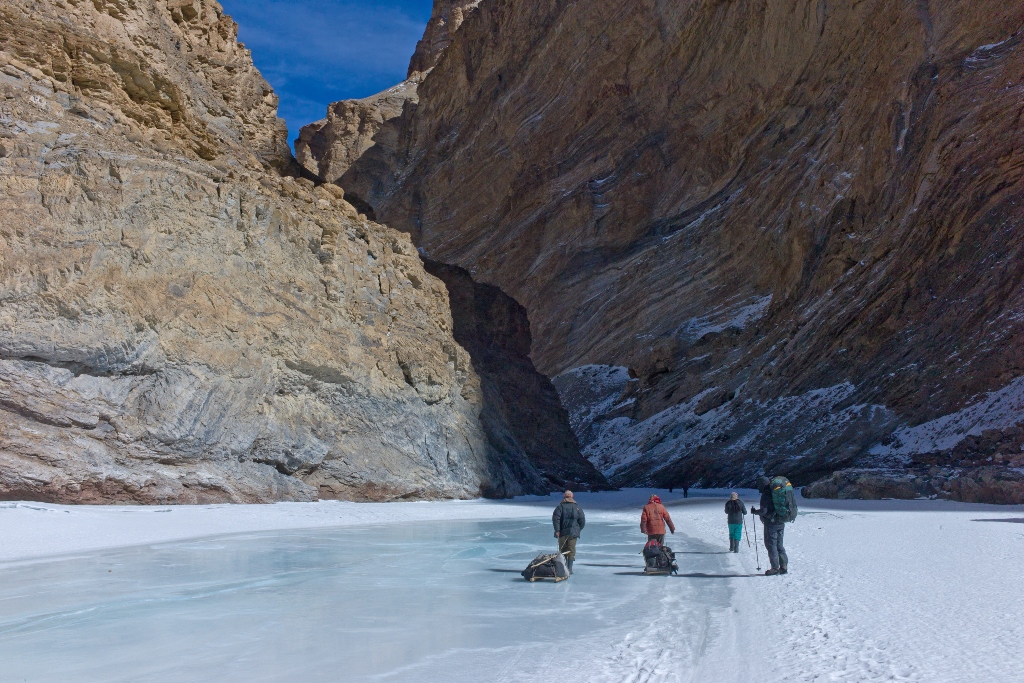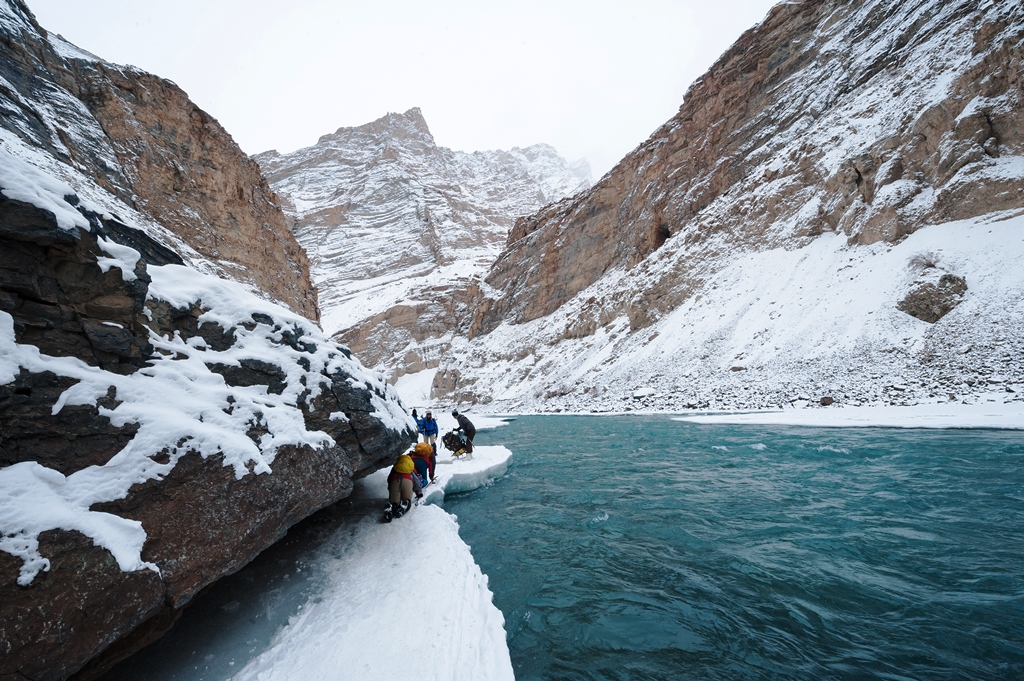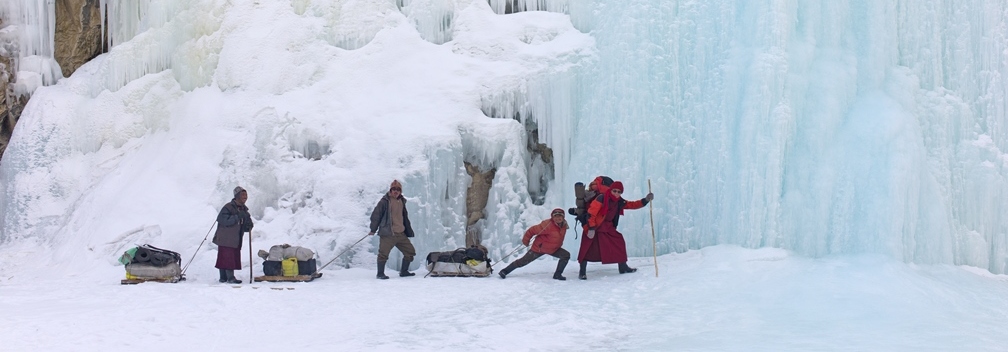An extremely glamorous trek, Chadar Trek is one for the adrenaline-junkies that like to go all in or all out. Trekking in Ladakh have gained immense popularity in recent years, and Chadar trek has become a favorite amongst Indians and travelers from other parts of the world. For me, it was 8 years back when I did Chadar Trek for the first time. Down the line, this little gorge now gets 20 times more people than those days. The trek is open for a small window of just 45 to 50 days, usually from 1st of January till 20th of February, depending upon the solid formation of Chadar – the ice carpet.
Also, Leh government along with ALTOA, (All Ladakh Tour Operators Association) now have come up with safe operating standards. The trek will run safely as it has been implemented with strict adherence of rules and regulations. Therefore, train your sights below for an on-ground experience of Chadar Trek. Find comprehensive details about the temperature, accommodation, the actual trek, food and some essential pro tips to execute the trek with finesse.
- Arrival, acclimatization and permits – 03 Day
- Actual trek – 05 Days
- Back in Leh and departure – 01 Day
Day 01 – Arrival and rest
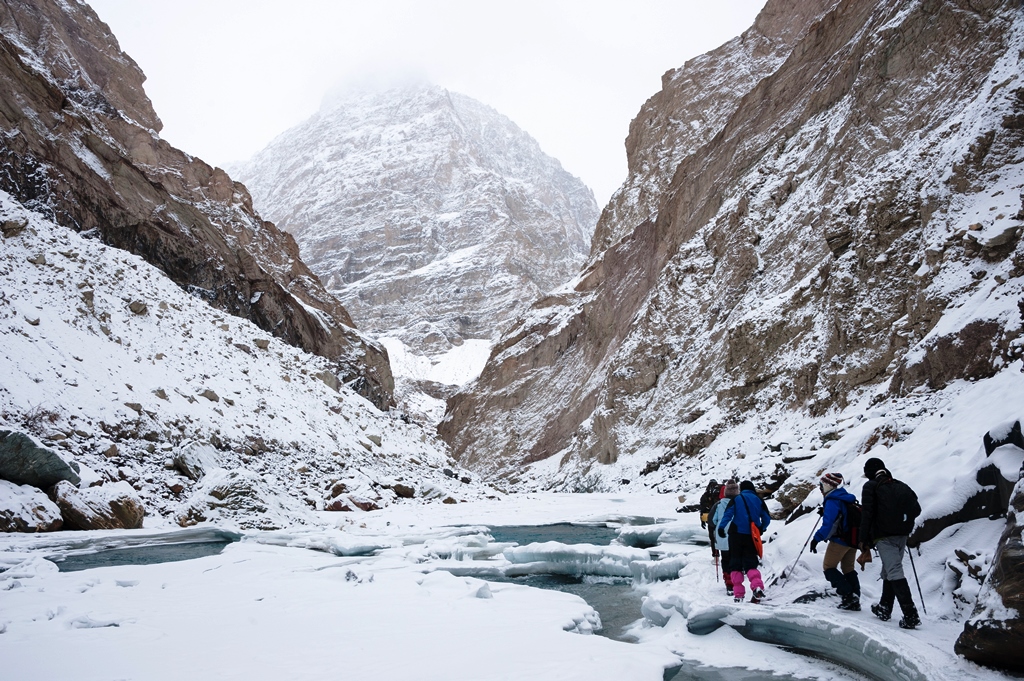
With a group of 8 people including me, we arrived at Leh via an early morning flight from Delhi. From the airport, we took a cab to the guest house on our own (As airport pick up was not part of the package) and reached at around 0830 hrs. Soon after reaching the guest house we were asked to complete the registration process which included insurance form, 3 passport size photo to be given along with a copy of the Identity and Address proof (voter’s card, passport or Aadhar card) and signing the indemnity form.
Post a cup of tea and breakfast, some of us wanted to rest as we were having a slight headache, so we went to our respective rooms. All of us were awoken by 1400 hrs for lunch. We had ordered good vegetarian food from the guest house on extra payment as the food in Leh was not included in the package we opted. My partner and other two guys were having a severe headache along with nausea and they opted out from having lunch. They were given warm water and were asked to take rest.
In the evening, we had to take her to the hospital due to severe hypoxia and AMS symptoms. The hospital was super cozy, clean and highly organized. The doctor admitted her for 2 HRS and administered oxygen and prescribed some medicines. Her health improved drastically after oxygen administration, after which we returned to our guest house by late at night.
Day 02 – Acclimatization walk
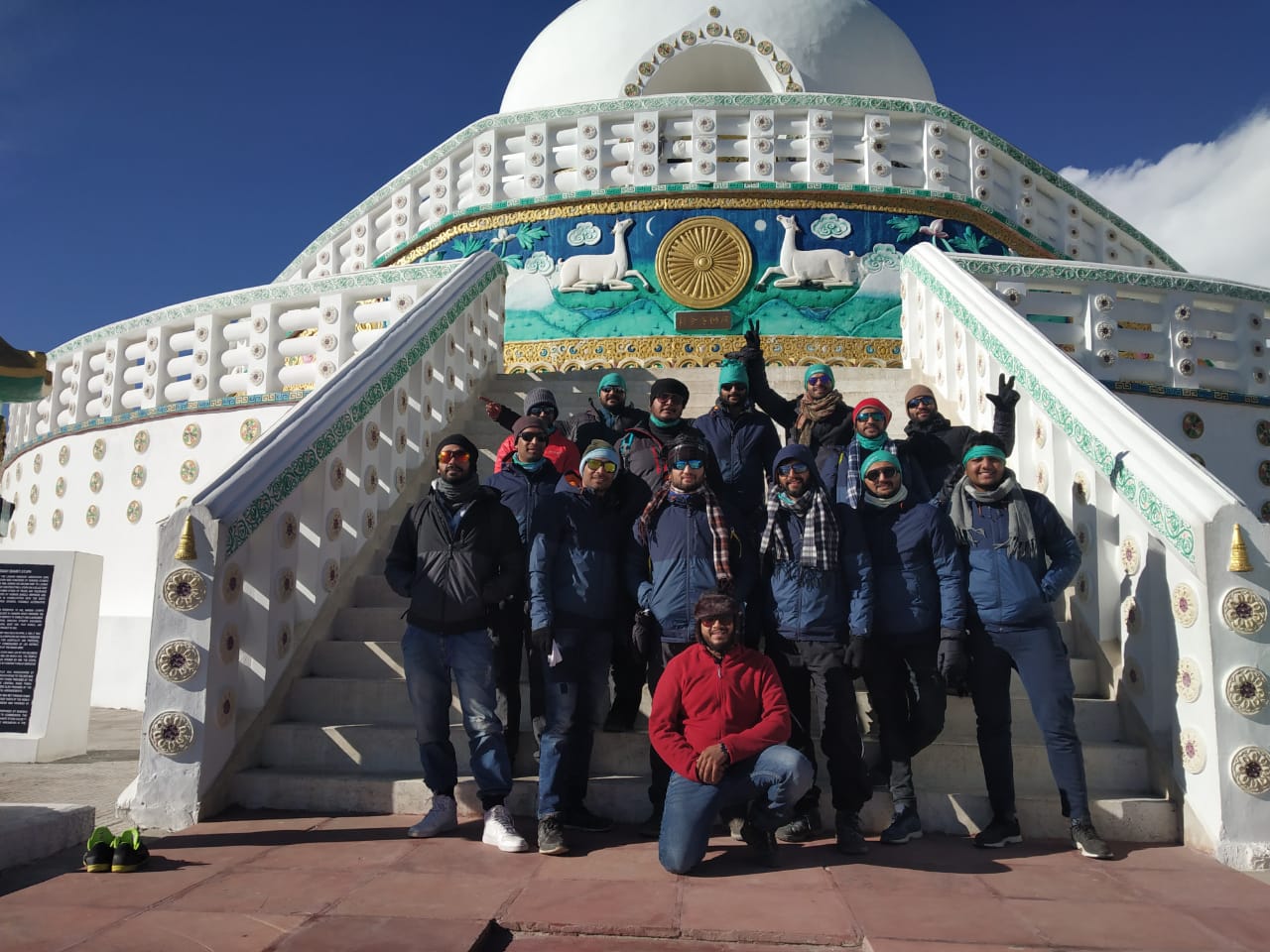
After waking up to a fresh morning, all of us were fit with no signs of AMS. Post a scrumptious meal of breakfast, a long and exhaustive briefing was given which comprised important points like
- How to acclimatize easily
- Protection from elements
- Demonstration of cloth layering
- Principles of Leave No Trace policy
- Women hygiene and safety
- A brief idea of what to pack during the trek.
Then we were led to Shanti Stupa for an acclimatization walk. Took some photos there and headed back to Leh market to have lunch and do other purchase. Some of us even had to take photos as they were not carrying one, few went to buy some chocolates and others to get a pair of gumboot. Later, we decided to have our dinner in the guest house and went for a sound sleep.
Day 03 – Permit day
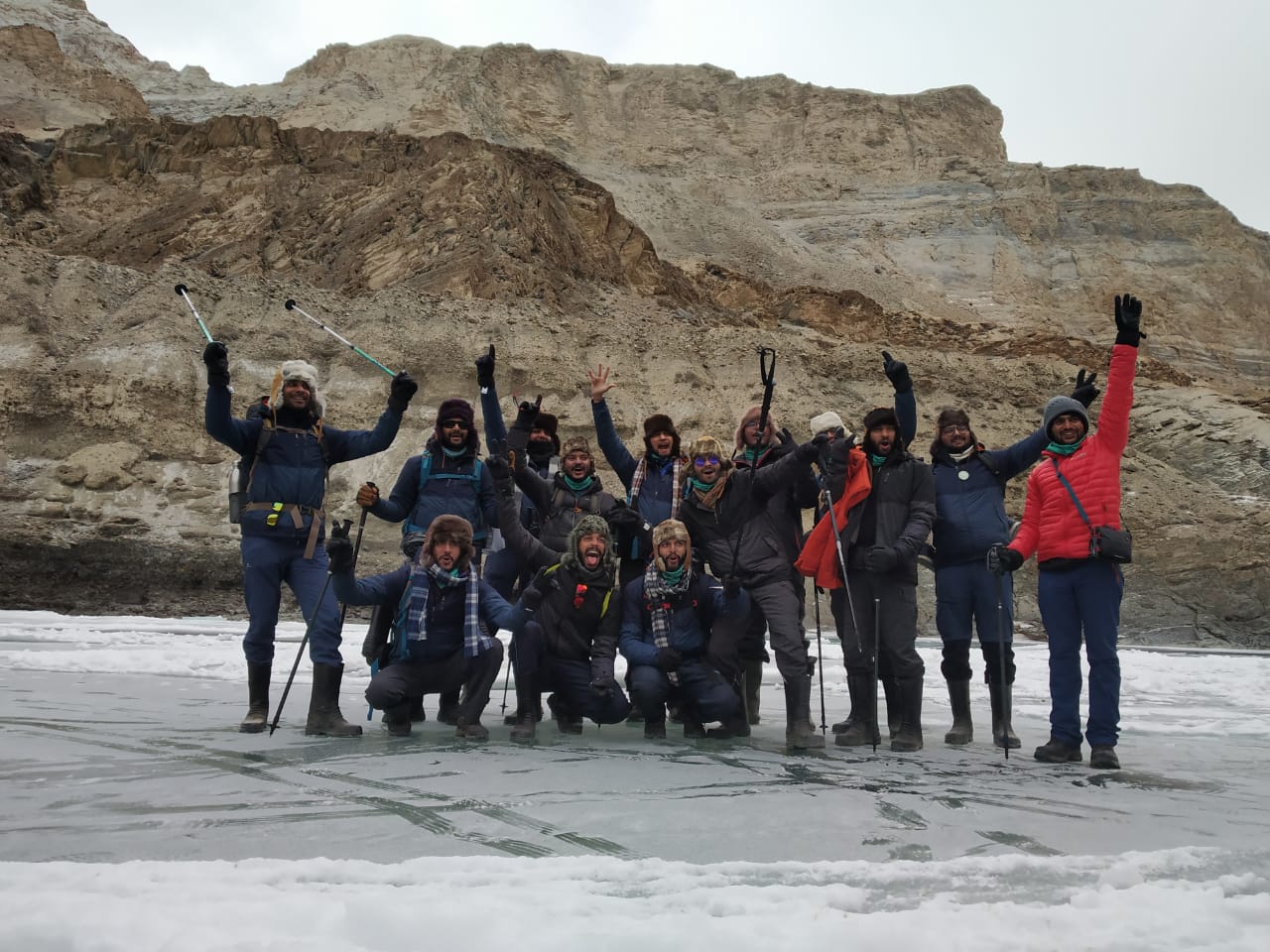
Today’s morning after breakfast we all started our walk to TIC (Tourism Information Center) in Leh. By around 1000 hrs we reached TIC. First, we had to show our boarding pass to the insurance company (ASC 360) along with the 100% accurate and complete insurance form which we had filled on Day01. After verifying and entering all our details into their computer, they gave us a medical form which had to be filled by us, and certified by the doctor and the medical team sitting on the adjacent room. Once in the medical room, we have to pay them Rs. 200/- for the medical check-up.
They will check your BP, and oxygen level first and then once you meet the doctor he will just casually ask a couple of questions regarding your previous health history in a very jolly way. If everything is normal, you are good to go! You get a stamp “APPROVED” on the form. Now with this form, you get back to the insurance office where they issue an insurance card, on the payment of Rs. 2000/- per person. It covers your emergency medical check-ups, emergency evacuation and many more. Now with the insurance card and the list of all the people in your group, you go to the ALTOA desk where they provide you with the following permits after paying the respective fees.
- Wildlife
- ALTOA fees
- Environment fees
Boom! Yes! Now you have got your passport to Chadar trek.
It took us almost a full day to get everything cleared from there even though we were the first group to be there for permits. After receiving the permits we went to the market and had an awesome dinner from a local joint called Darjeeling Corner. After some small shopping like nuts, dried fruits and chocolates for the next day trek, we took a cab and reached the guest house. On reaching, there was an exhaustive briefing on how to and what to pack in a backpack for the trek tomorrow. You can also read our blog that states what should one pack for Chadar Trek.
Actual Trek
Day 04 – Drive and trek to Tso Ma Poldar
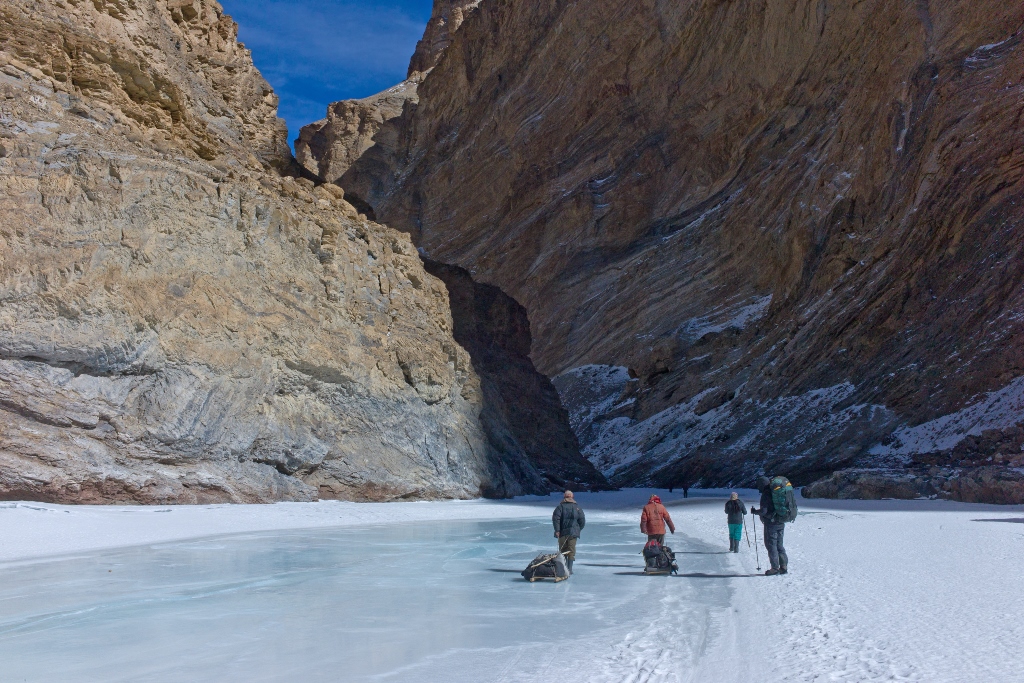
We got ready by 0700 hrs and had our breakfast by 0730 hrs. The vehicles were ready when we came out, it was 02 tempo travelers. We were all packed while the vehicles were loaded with all the ration and equipment needed. After some photo sessions and briefing, we departed from Leh around 0920 hrs. The drive till Chilling was fast, smooth and beautiful. After that, the drive became challenging, treacherous and scarier yet amazing.
The road was wide enough for a tempo traveler to pass through with its tires just inside the road and part of the body overlooking the deep gorges. The adrenaline rush was building in by just seeing the road and the frozen white Zanskar River beneath. By around noon, we reached Tilad Do. We had a quick tasty hot lunch made by our cooks along with hot black tea. Then, it was time to pack and push towards the first campsite. It was a technical walk of around 3 hours and by 1630 HRS we reached the campsite.
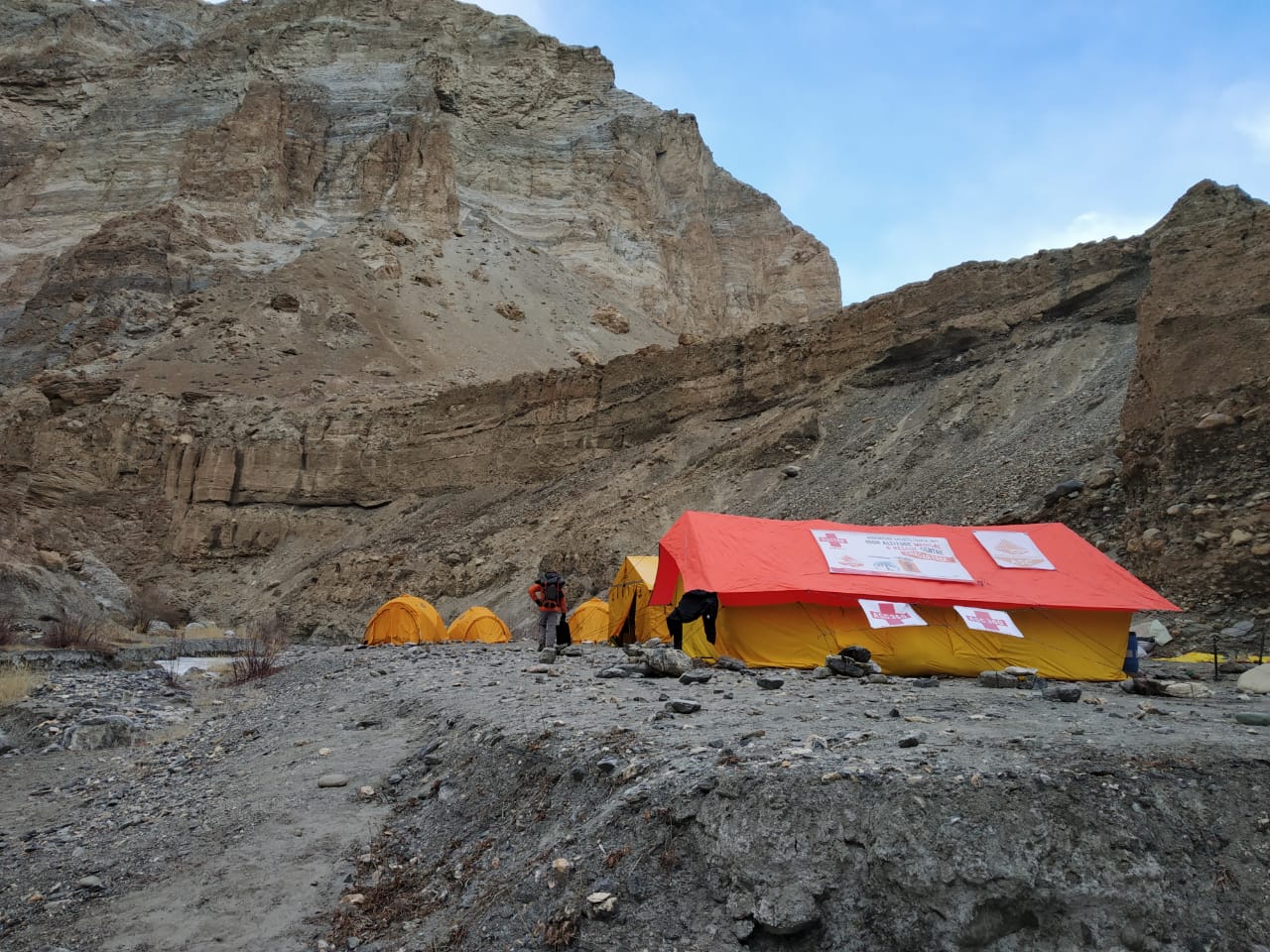
Most noteworthy part of the campsite was that the medical camp was placed next to our camps. The medical camp operated by the insurance company ASC360 had two doctors and a few assistants ready 24*7 for any medical support needed. One of the doctors was supposed to travel to the next campsite and luckily he joined us till the next camp.
Talking about the climate and weather, the temperature here drops dramatically after the sunset. The best remedy to curb the cold was the hot soup prepared by the camp chef that helped us keeping ourselves warm. The dinner was just too tasty and fulfilling. We all went to sleep by around 2100 hrs. It was pretty cozy inside the tent compared to the harsh bone-chilling cold outside. The sleeping bags were double layered and we used a hot water bottle for extra warmth.
Day 05 – Trek from Tso Ma Poldar to Tibb
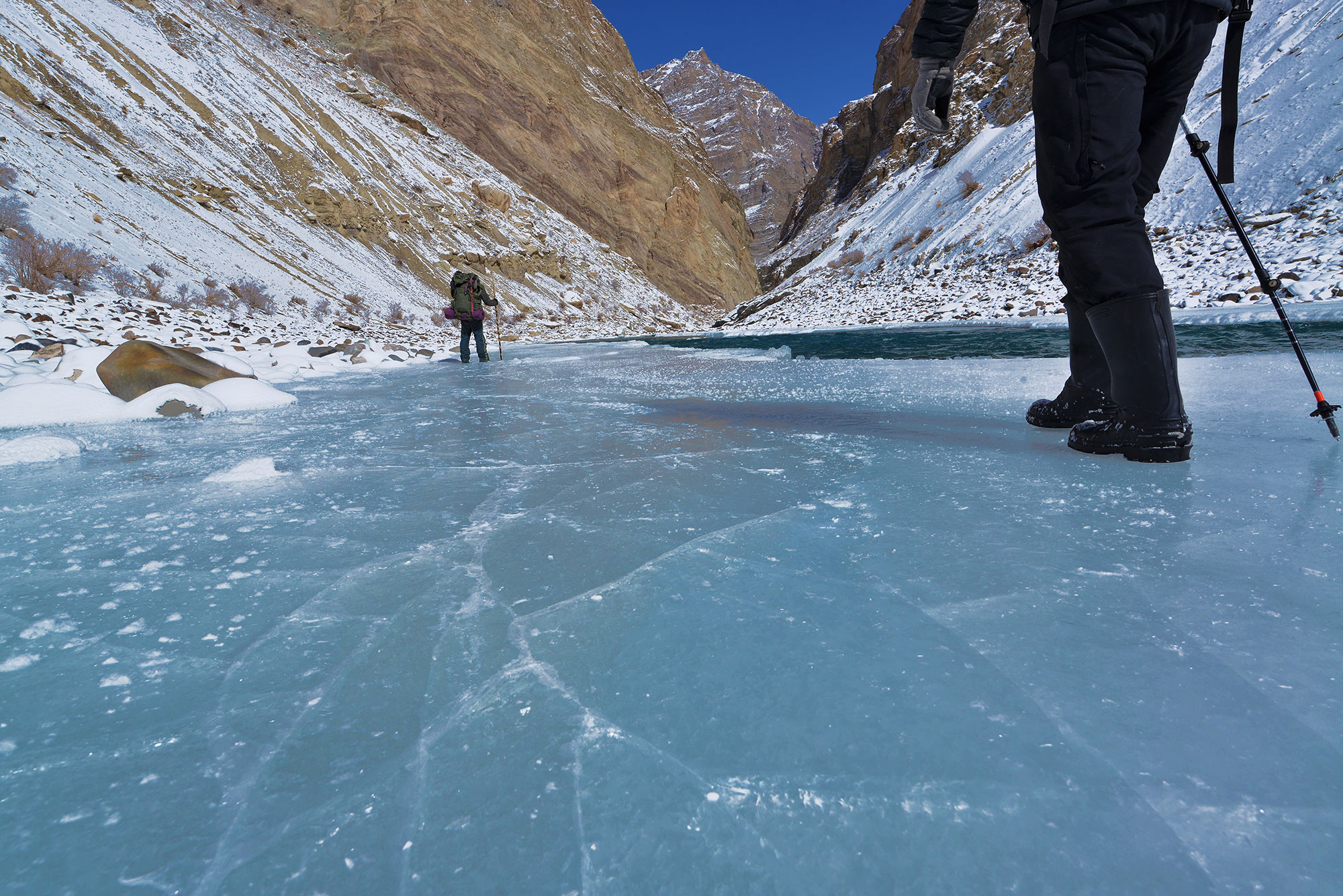
After a delicious breakfast, we started our trek towards Tibb Cave. It was a long icy walk and by the time we stopped for lunch break, all of us were pretty much comfortable in walking over ice. The landscape was so mesmerizing that sometimes we forgot that we were ice walking over a frozen raging river and water is still flowing beneath at Godspeed. A small mistake can be fatal here.
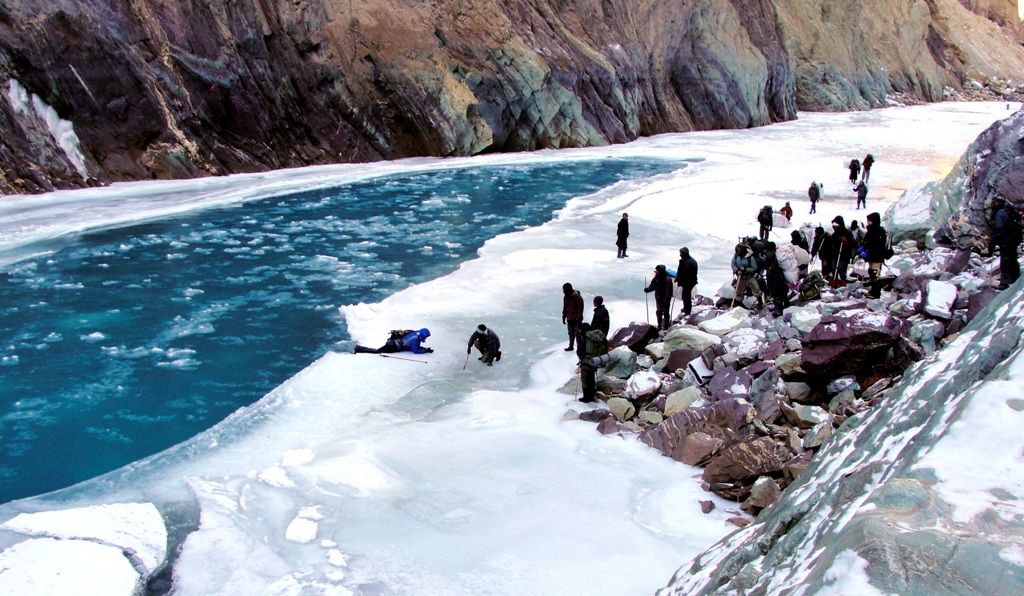
Image Credits: planetwayround.com
Tibb campsite was comparatively colder than Tso Ma Poldar, but by now we were accustomed to the cold. People who still felt cold were founded by the small fire made by the porters.
Day 06 – Trek from Tibb to Narek Waterfall
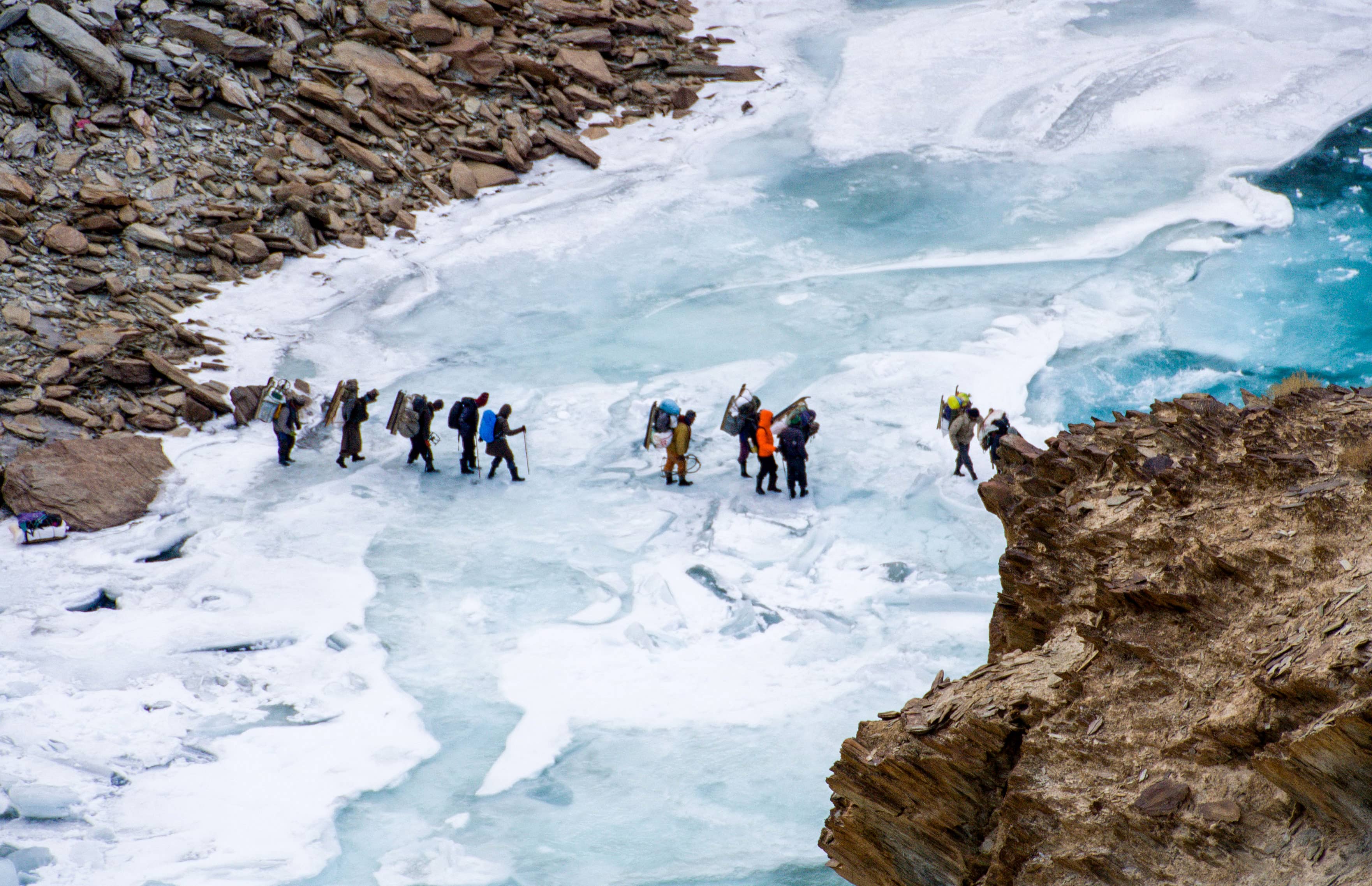
Today’s trek is significant as today we are going to witness the much-awaited site, the frozen waterfall in Narek. The trek was long but the enthusiasm and energy in the group were very high. The only aim was to reach Narek falls for the classic group photo with the frozen falls as a backdrop. The place where we stopped for lunch, we saw a few young boys taking a dip in the water. We were tempted to do the same however the initial briefing stopped us from doing anything like that.
The excitement and energy in us went exponentially very high as soon as we saw the frozen falls. It is so majestic and indescribable in just mere words. It looked like somebody just waved a magic wand at the waterfall and it went frozen instantly.
Day 07 – Trek from Narek to Tibb
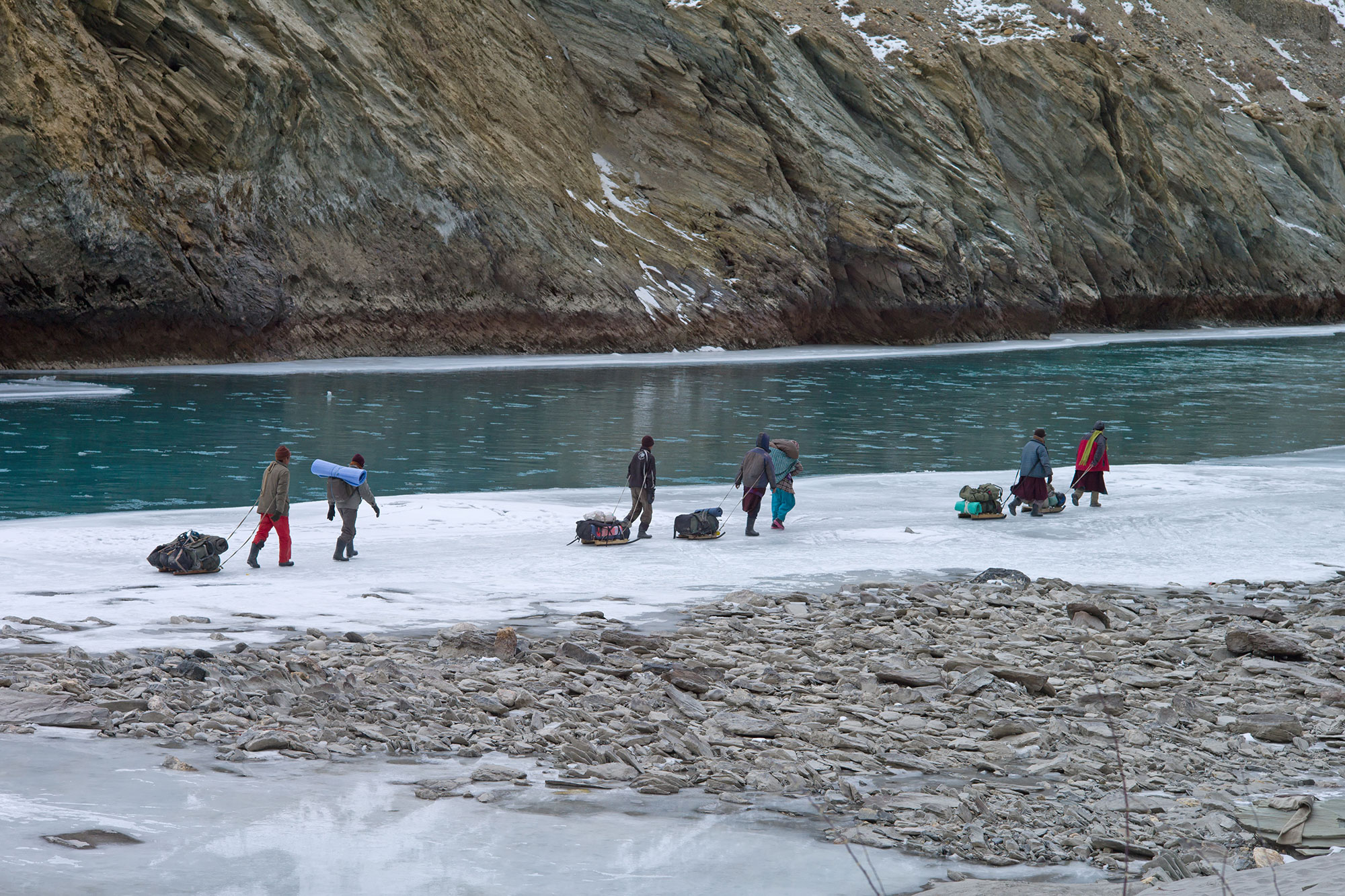
After taking some photos of the falls, we started our walk back towards the road head. The walk back felt longer than it actually was before. We reached our campsite a little later than our actual estimated arrival time.
Day 08 – Trek from Tibb to Shingra Koma and drive to Leh
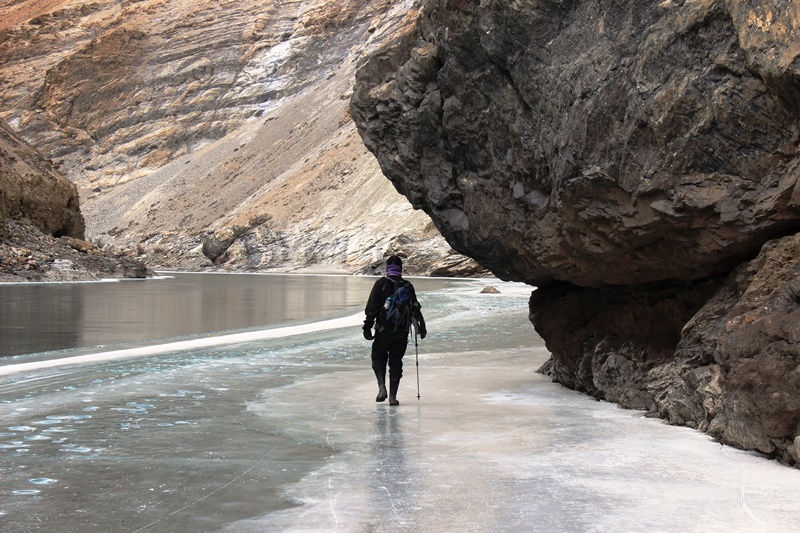
Today, we started earlier than usual as we had to trek till the road head and drive back to civilization in Leh. It was a very emotional moment for everyone to leave the beautiful Chadar behind. We reached Leh by around 1830 hrs, and had our lunch at the road head in Shingra Koma.
Day 09 – Departure from Leh
We had an early morning flight back to Delhi. The other two trekkers in our group also had the same return flight therefore we decided to tag along with them till Airport. Finally, an amazing memorable nine days came to an end. If you ask me what has changed from my previous visit and this one, I would say a lot has changed.
Pro tips
- Ensure you carry a well broke in waterproof hiking shoes
- Gumboots is a savior, but not an alternate for hiking boots
- Layering is the success mantra
- We do not recommend to use crampons. It needs a good experience to be used accurately. Alternatively, you can use easily available “microspikes”
- Trekking poles can be very helpful on the slippery ice
- Do not expect the same level of service as the life is harsh there. People serving you are also humans; they do their best to keep you safe and cosy but don’t expect luxury.
- It takes an initial two to three days to get adjusted to the prevailing cold conditions. Ensure the right clothing and layering and avoid heaters.
Read our other blog ‘Short Guide to Chadar Trek”.
You often have heard a lot of stories about the challenges of Chadar Trek that hinders you from experiencing this magnificent trek. As said, ” Don’t Listen to what they say, go see for yourself”. This trek is unique, one of its kind, and must be experienced by all the adrenaline seekers. So if you are someone who wants to see something rare and surreal, it’s time for a new adventure.

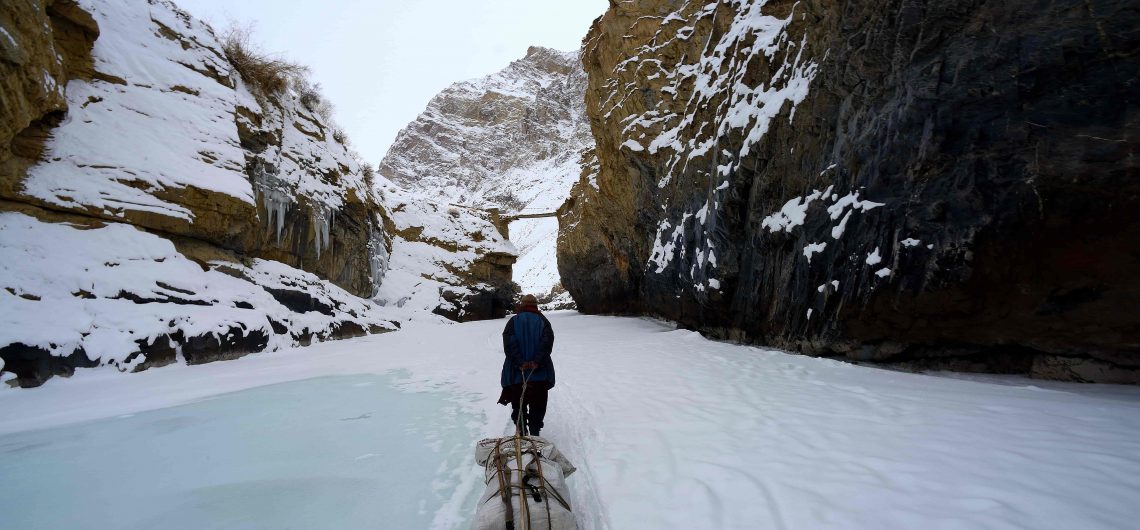


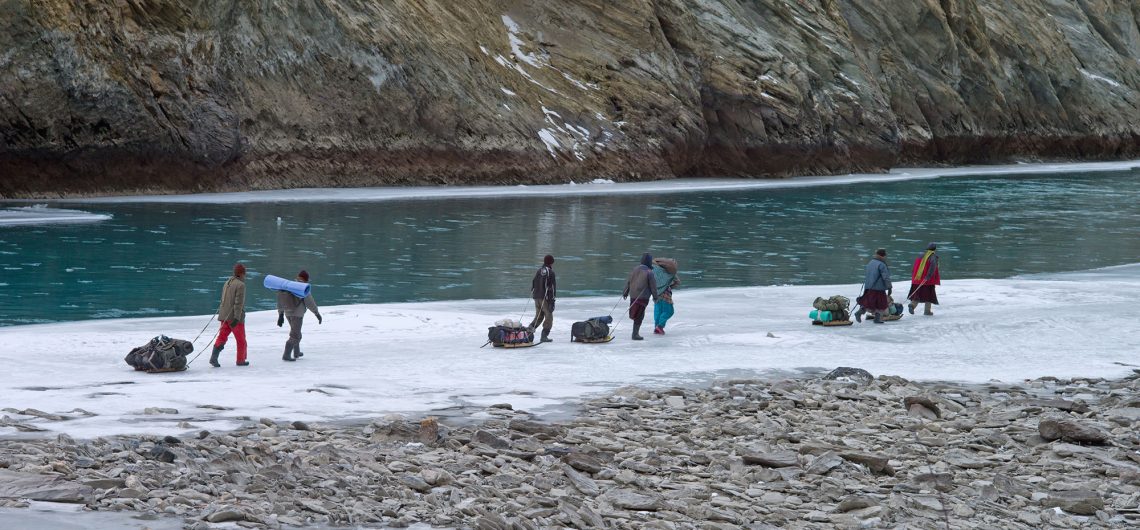
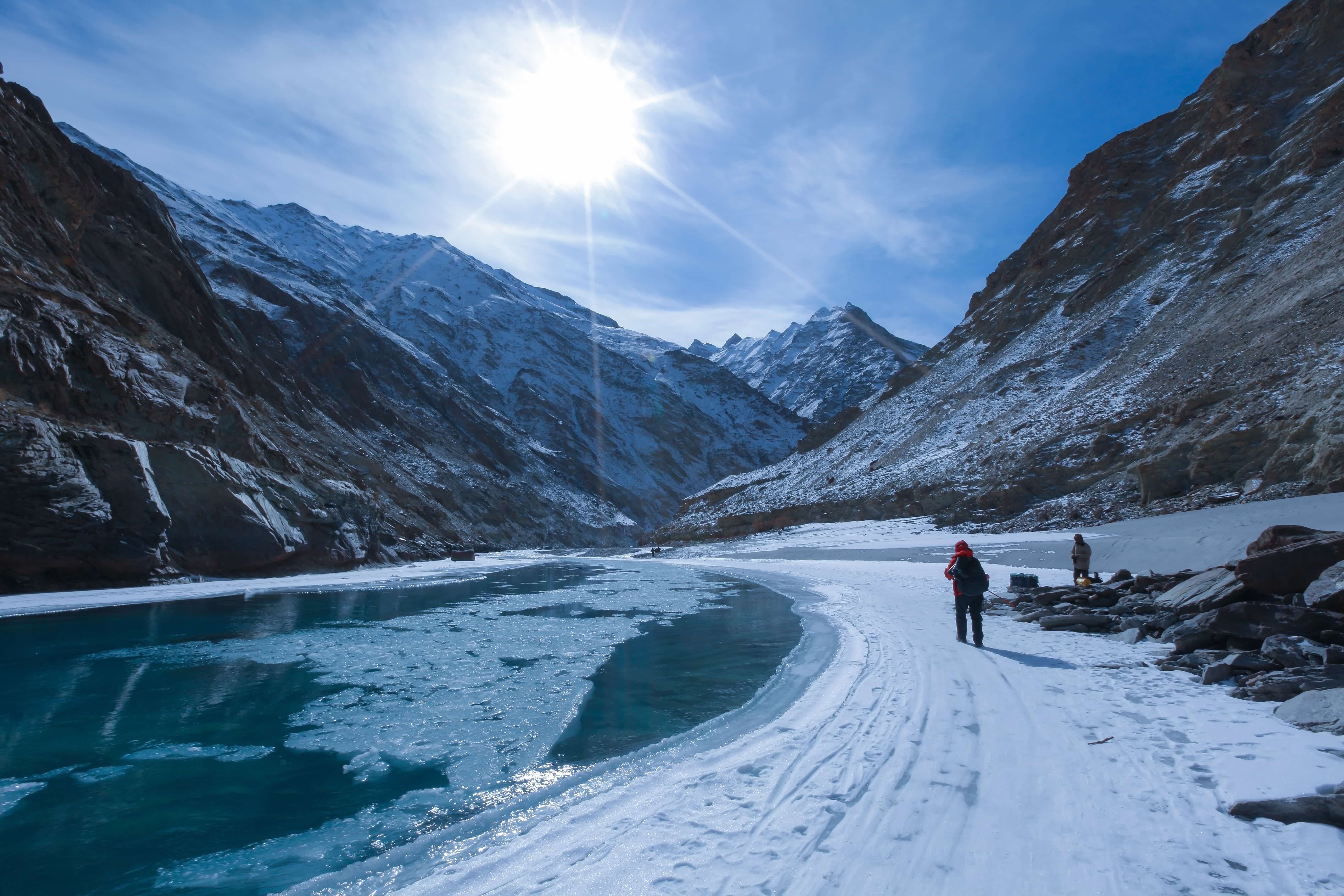 The temperature here drops to around -30 degree Celsius and is the most suitable for being tread on in the winter months, hence.
The temperature here drops to around -30 degree Celsius and is the most suitable for being tread on in the winter months, hence.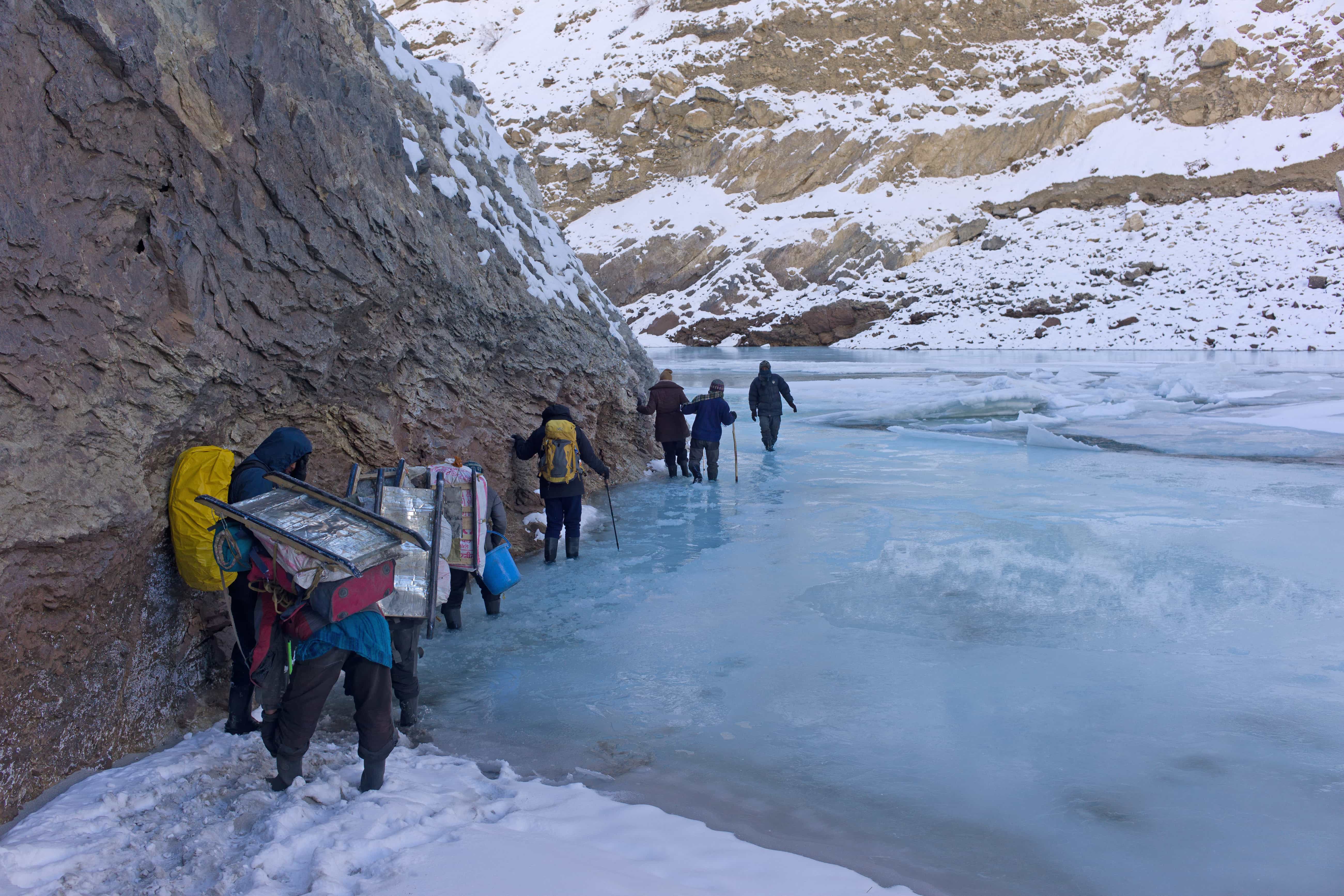 Trekkers start this exploration from Chilling and hike further up to Naerak(they can return from this point itself) and then Lingshed. The entire ice trail is about 105 kms long and trekkers walk about 15 kms each day
Trekkers start this exploration from Chilling and hike further up to Naerak(they can return from this point itself) and then Lingshed. The entire ice trail is about 105 kms long and trekkers walk about 15 kms each day A road between Zanskar and Leh is under construction which will make it easier for the locals to commute. However, it poses a great threat for the wildlife including snow leopards in the area.
A road between Zanskar and Leh is under construction which will make it easier for the locals to commute. However, it poses a great threat for the wildlife including snow leopards in the area.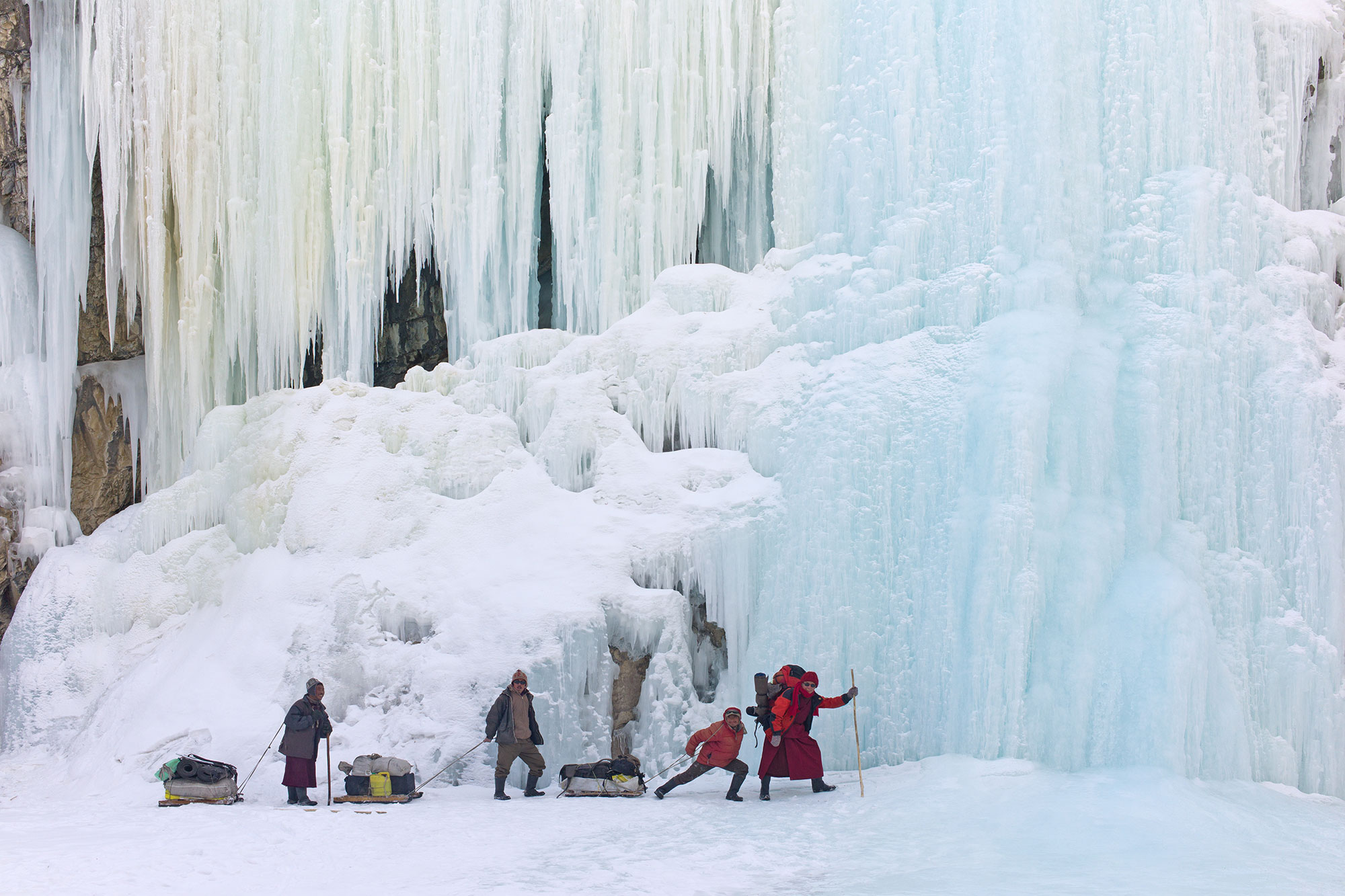 Frozen Naerak falls.
Frozen Naerak falls.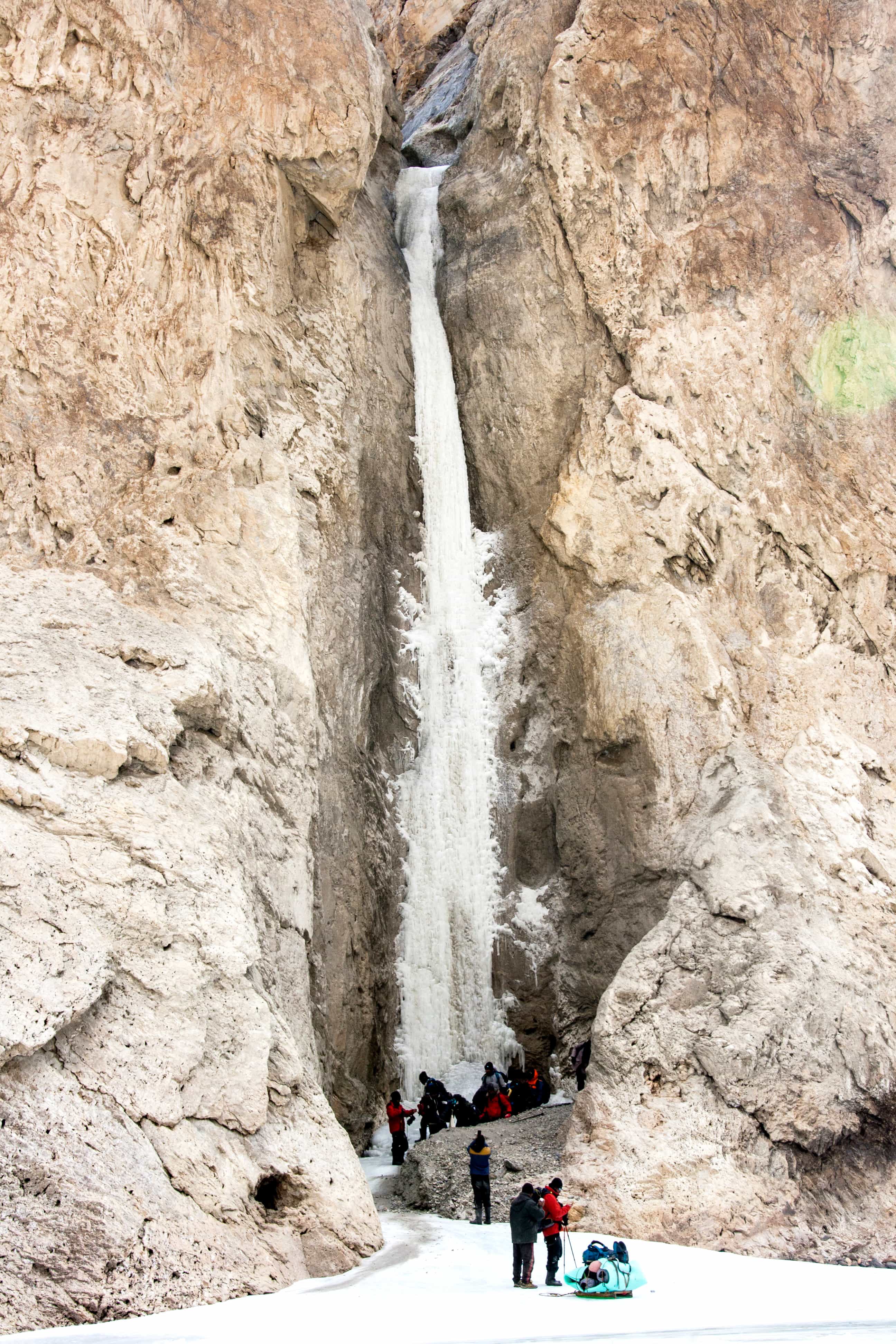 The gigantic brown mountains that outline the frozen river present a great visual.
The gigantic brown mountains that outline the frozen river present a great visual.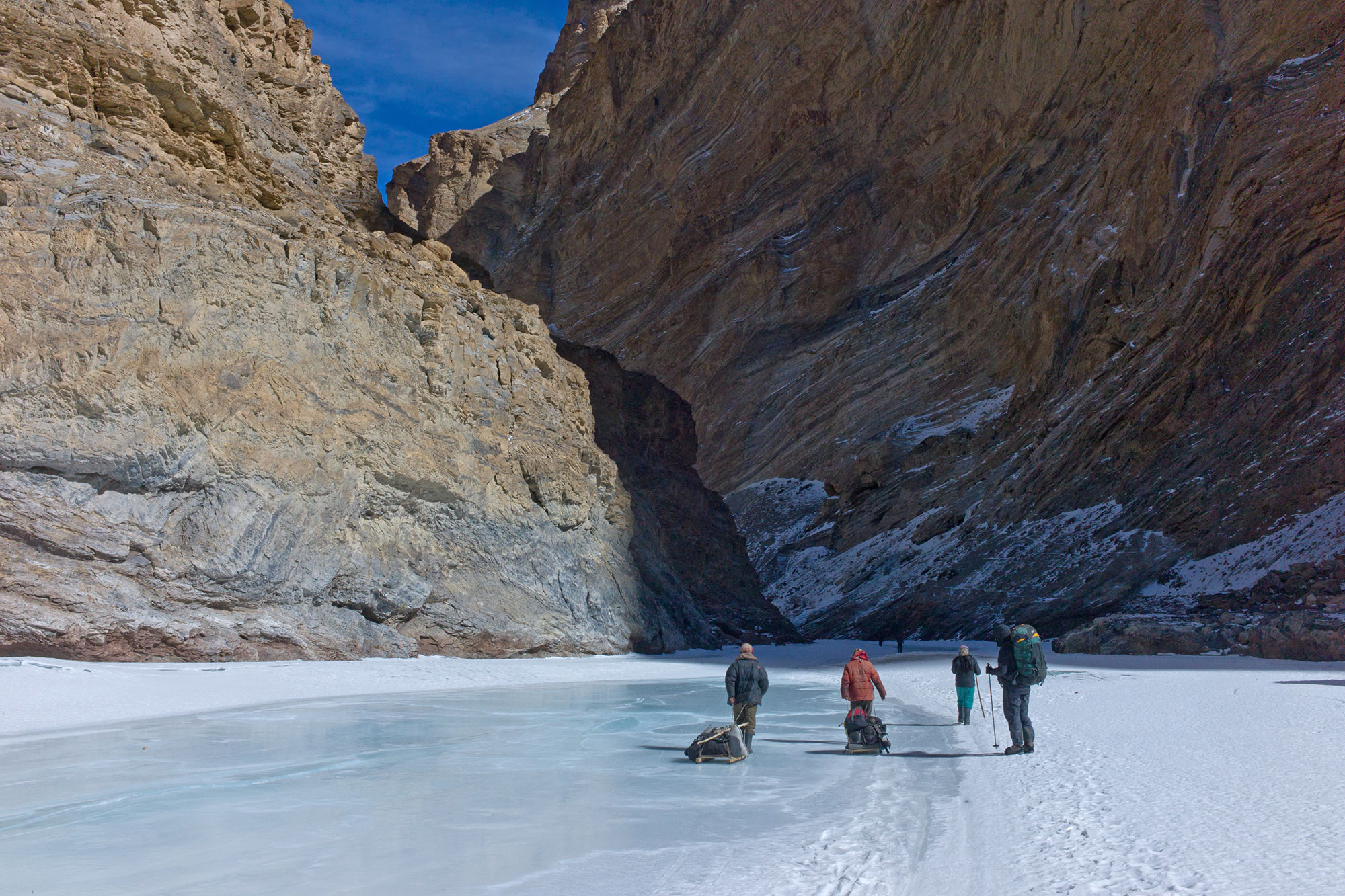 Locals cook food here in caves and it is served in caves. How dreamlike!
Locals cook food here in caves and it is served in caves. How dreamlike!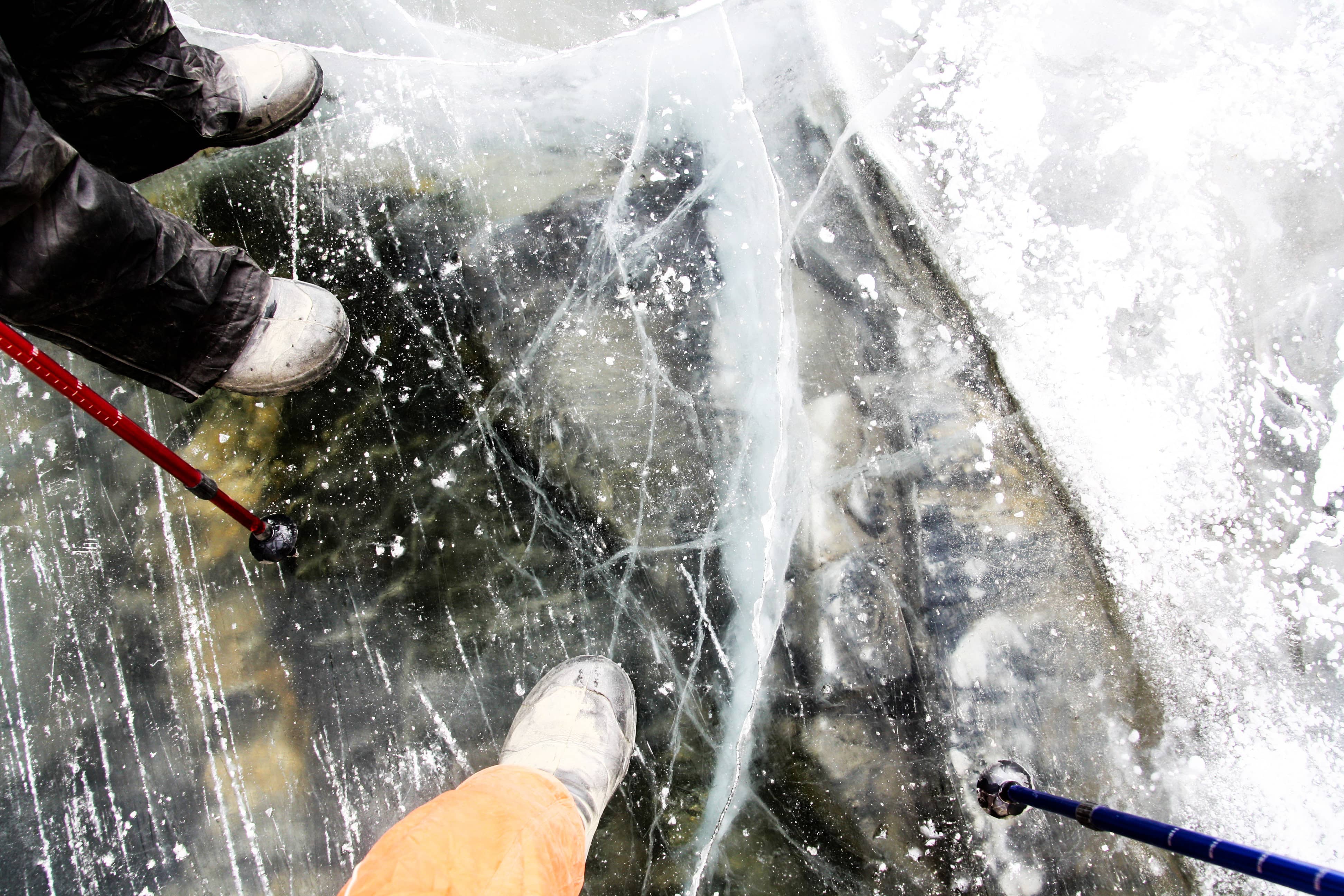 Impeccable trekking gear should be made use of while carrying out this trek. The ice sheets thin down over different times of the day.
Impeccable trekking gear should be made use of while carrying out this trek. The ice sheets thin down over different times of the day.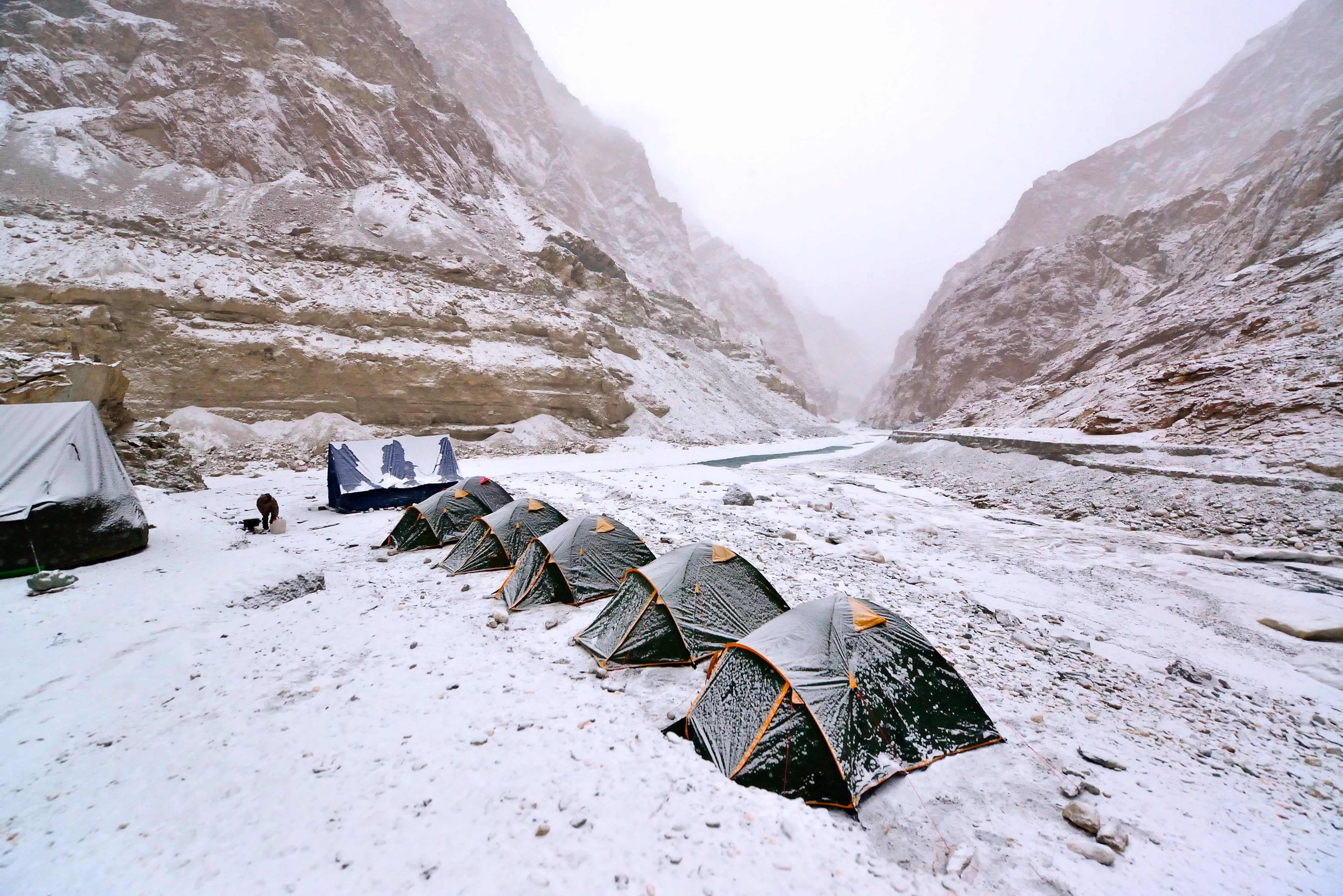 Camping is an absolute delight on this trek! Enjoy incredible starry nights. Star-gazing is definitely something you should check off your list when you’re here.
Camping is an absolute delight on this trek! Enjoy incredible starry nights. Star-gazing is definitely something you should check off your list when you’re here.